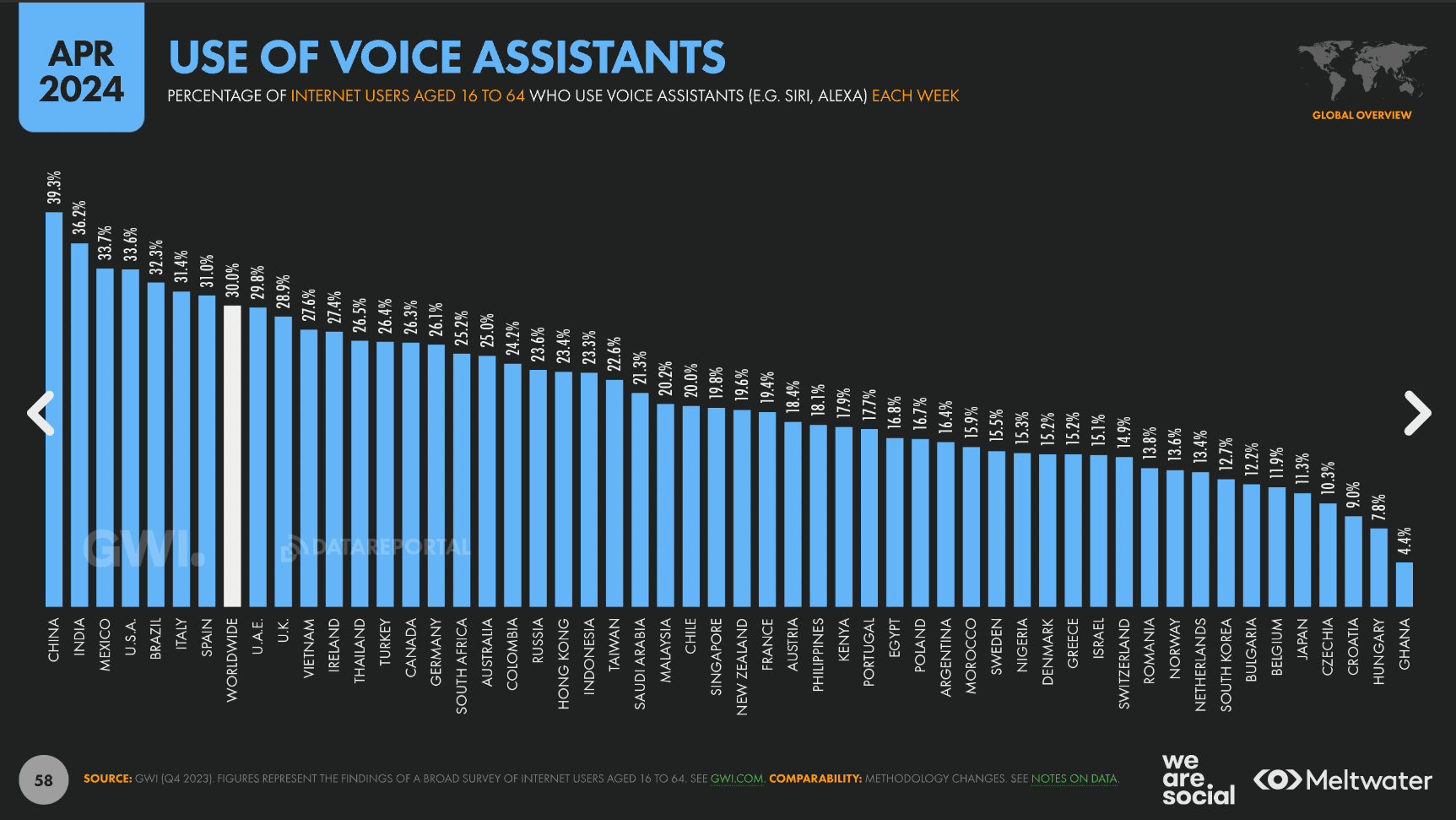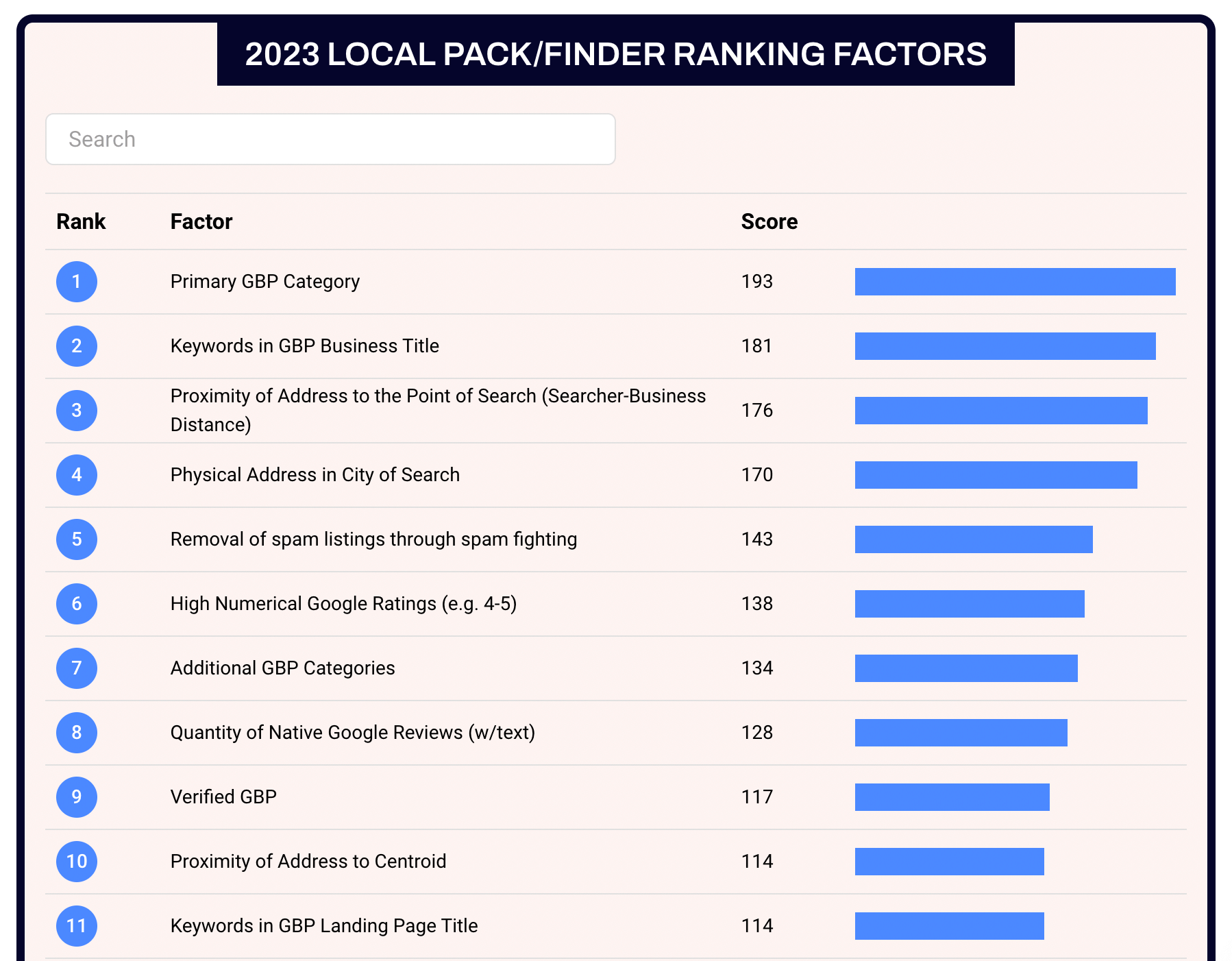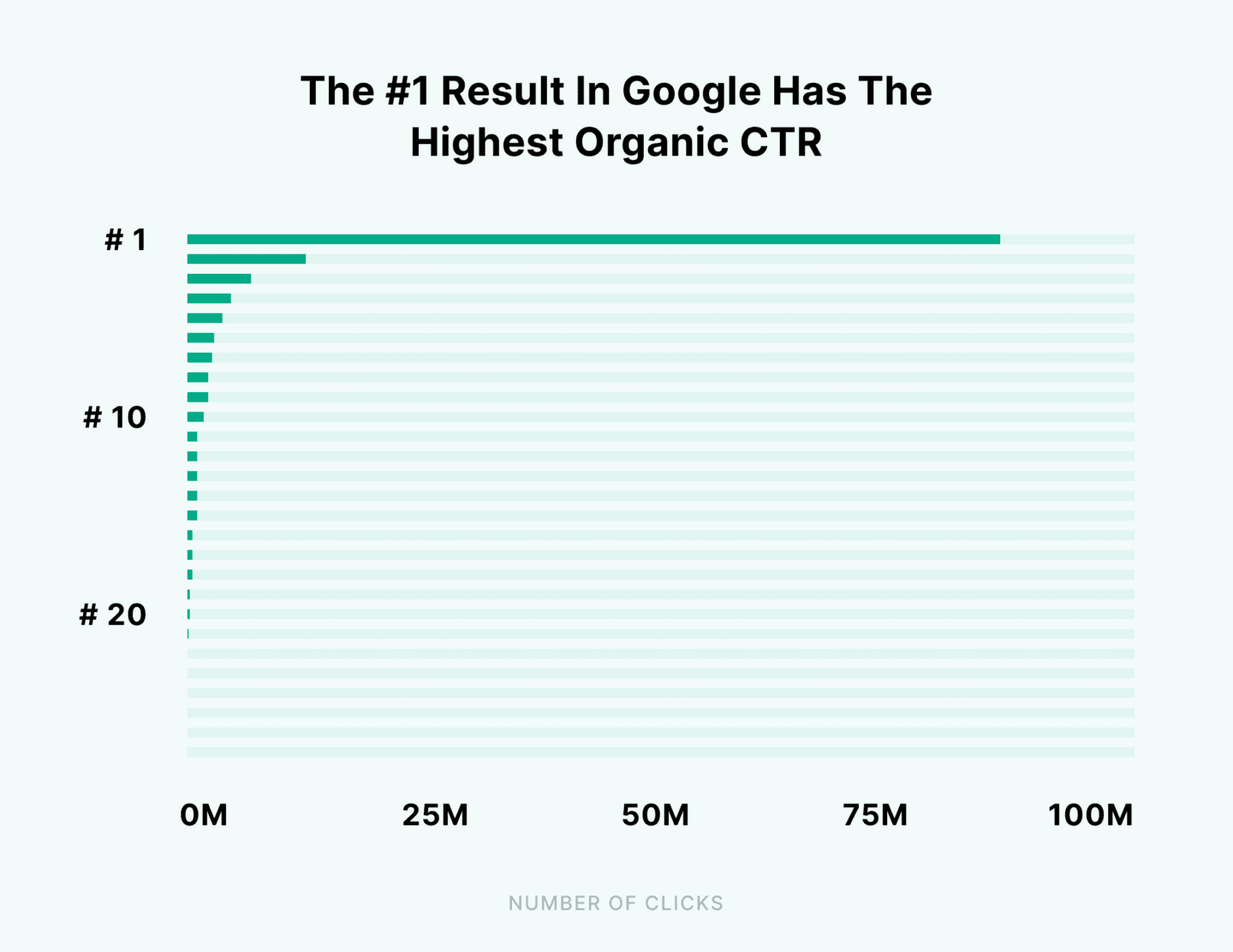
50+ Google Search Statistics for Marketers and Businesses in 2025
Unlock the power of AI — Notta's meeting assistant records, transcribes and summarizes meeting minutes with one click.
Hop on to any marketing forum, and you’ll see countless debates on the relevance of SEO today. Some say that SEO is dead, whereas others say it’s not as significant as it once was. However, the truth is that SEO isn’t dead. Its dynamics, though, have surely changed.
I’ve listed some of the most important Google search statistics you should know about the search engine and its algorithm so you can make informed decisions about your SEO strategy for 2025.
Google search stats (top picks)
Google sees about 6.3 million searches conducted every minute worldwide.
Google remains the most used search engine in the world, with a mobile market share of 95.32% and a desktop market share of 81.95%.
Nearly one in every three Google searches is location-related.
Among the top 100 websites, direct search accounted for the highest share, at 81%. On the other hand, organic search comes in second across desktops and mobiles, at 23.3% overall.
While Google generated $175 billion in paid search revenue in 2023, paid search clicks accounted for only a tiny fraction of global web traffic.
Google search usage statistics
Understanding the trends related to Google searches is key to knowing what kind of queries are most critical. In addition to aspects such as search volume, statistics about search on mobile and desktop, and more, the following sections include some of the key statistics you should be aware of.
Global search volume and trends
Understanding global search volume and trends in searches is one of the most important aspects you must consider.
Google sees about 6.3 million searches conducted every minute worldwide. To put this into perspective, this translates to about 9.07 billion searches per day or about 3.3 trillion searches per year.
As of December 2022, 76% of search traffic went to Wikipedia, followed by 35% to Apple, 31% to Ikea, and 19% to Amazon. Search traffic to YouTube stood at 7.5%.
While updates to Google’s algorithm between 2017 and 2020 were either Core updates or content-focused, the trend from 2021 saw a great focus on addressing spam and product-based content.
An analysis of search trends and intent from Semrush shows that in 2022, 9.2% of keywords searched were commercial, 52.2% were informational, 17.6% were navigational, and 21.1% were transactional.
Mobile vs. desktop search statistics
Search statistics over the past couple of years show that a greater proportion of users conduct searches on their mobiles rather than desktops.
Google remains the most used search engine in the world, with a mobile market share of 95.32% and a desktop market share of 81.95%.
25% of desktop Google searches end without a click, while 17% of mobile searchers end without a click.
About 56% of web traffic searches take place on a mobile device.
54% of smartphone users search for business hours, while 53% search for directions to local stores.
Sources: Statista, Semrush, GS Statcounter
Voice search statistics
Voice search has been playing a greater role in Google searches over the past couple of years. Besides a host of other considerations, it has changed how SEOs optimize content for keywords.
17.6% of users use smart home devices to access the Internet.
China ranks the highest in terms of the percentage of people between 16 and 64 who use voice assistants to access the Internet at 39.3%. The worldwide average, on the other hand, stands at 30.0%.
Among all major voice assistants, Google Assistant leads the way with 85 million users in the US in 2024, and this figure is expected to rise to 92 million by 2025.
Sources: Data Reportal, eMarketer
Search engine market share
For years, Google has held the title of the search engine with the biggest market share, surpassing Yahoo, Bing, and others by a considerable margin.
Google’s market share vs. other search engines
As of July 2023, Bing had 10.51% of the global desktop market share, while Google had 81.95%. Yahoo’s market share in the same period stood at 2.67%.
The majority of Google’s revenue is generated through advertising, and its parent company, Alphabet, was one of the biggest Internet companies worldwide in 2023, with a market capitalization of $1.6 trillion.
As of October 2024, Chrome, Google’s native web browser, accounted for about 65% of the web browser market share.
Google Sites generated $191 billion in ad revenue in 2022, which increased to $206 billion in 2023.
Sources: Statista, GS Statcounter, Statista
Key Google search trends in 2025
The nature of Google search has consistently changed over the years, with text-based searches now only a part of the picture and voice, visual, and video searches gaining increasing momentum.
Rise of visual and video searches
Visual searches have become increasingly popular with search engines and independent websites allowing you to search using images. Video searches have also emerged as a noticeable trend on platforms like YouTube, and the statistics below highlight their increasing popularity.
The use of image recognition tools or search lenses on mobile among those between 16 and 64 stood at 27.1%
Brazil ranks #1 among countries where 47.8% of the population between 16 and 64 use image recognition tools to run visual searches.
Mexico, Columbia, Chile, and Indonesia take the next four spots, while the percentage of people in the US who use visual searches stands at 23.8%.
Sources: Data Reportal
Local search statistics and importance
Local search takes up a big chunk of searches conducted on Google and is critical for businesses looking to build a local audience and consumer base for themselves.
In 2022, 98% of consumers used the Internet to find information about local businesses, an increase of 8% from 2019.
42% of millennials who perform a local search visit a business on most occasions. Additionally, 50% of them are likely to conduct local searches on the go.
46% of searches conducted on Google have local intent.
According to a survey of marketers, the most helpful ranking factors on Google’s local pack include the primacy of the Google Business Profile category, the keywords in the Google Business Profile title, and the proximity of the address to the point of search.
Sources: Bright Local, Review Trackers, SEO Roundtable, Whitespark
Organic vs. paid search statistics
One question that markets often face is what percentage of their resources they should allocate to organic and paid search.
Organic search click-through-rates (CTR)
The #1 search on Google’s organic search results was reported to have an average CTR of 27.6%.
Organic CTR for search ranking positions between 8 and 10 is virtually the same.
The #1 organic result on the SERP is 10x more likely to receive a click than a page on the 10th spot.
Moving one spot up on the search results will lead to a 2.8% increase in CTR.
URLs that have terms similar to the keyword have a 45% higher CTR than URLs that don’t contain any keyword whatsoever.
Among the top 100 websites, direct search accounted for the highest share, at 81%. Organic search, on the other hand, comes in second across desktops and mobiles, at 23.3% overall.
Sources: Backlinko, Data Reportal
Paid search trends and effectiveness
What are the key trends when it comes to paid search? And how effective is it really?
Paid search ad spending grew by 4% YoY in Q3 2023 to 11% YoY, but ad impressions declined by 15% YoY in the same quarter. As a result, advertisers must be cautious about using the right keywords to target users who will engage with their ads.
The impact of AI is considered one of the key reasons why paid search ad click growth has been declining. This is because users now have answers to their queries via the AI Overview without having to click on a link.
The cost per click of a retail media search ad was $1.32 in Q3 of 2024. This value makes it more expensive than the search CPC, which stands at $1.10.
Paid search was responsible for 0.64% of traffic to the web’s top 100 websites or domains, regardless of the device.
While Google generated $175 billion in paid search revenue in 2023, paid search clicks accounted for only a tiny fraction of global web traffic.
Sources: Search Engine Land, eMarketer, United States Securities and Exchange Commission
Google algorithm updates and SEO impacts
Google algorithm updates have always had a key role in affecting search rankings. The latest round of updates specifically addresses spam and highlights content that offers value based on the user’s queries. This is regardless of the fact that such content could be produced by smaller, independent websites.
However, a few key updates have had a noticeable impact on the search engine’s algorithm.
BERT: The key idea behind the BERT update from 2019 was to use Natural Language Processing to improve the search engine’s understanding of more complex and natural or conversational search queries. This update targeted search queries where words like “for” and “to” mattered a lot to the query’s meaning.
MUM: Short for Multitask Unified Model, this new technology for Google search was first introduced in May 2021. Its goal is to make Google search more semantic and context-based.
August 2024 Core Update: Another major update from Google came in August 2024, in which Google aimed to ensure search results truly answered users’ search queries rather than promoting content that was simply designed to perform well on search.
Sources: Google
The key impact of the August update, for instance, was seen among websites that create content that offers genuine value to the reader.
Niel Patel’s website, for instance, saw a 17% increase in page one keyword rankings MoM and a 10% total increase in keyword rankings MoM.
On the flip side, surveys conducted by Search Engine Roundtable found that 44% of those surveyed said that their rankings or traffic were down, with a total of 1583 votes.
On the other hand, 27% said that their rankings or traffic were up, with a total of 993 votes.
29% said they saw no change in traffic or rankings.
The August update has impacted industries where consumers demand trustworthiness, including healthcare and finance. Industries where the user experience is critical, such as e-commerce, have also been affected.
Sources: Niel Patel, SEO Roundtable
How algorithm updates influence content creation
Every update to Google’s algorithm also impacts a business’s approach to content creation. For those that have purely focused on ensuring their content ranks well for search, the priority will now be to create valuable content that meets the search intent. Similarly, the increased adoption of video and visual content means that creators also have to focus on these mediums if they want a higher ROI.
The E-E-A-T principle, which stands for Experience, Expertise, Authoritativeness, and Trustworthiness, demands that businesses create content that demonstrates their experience and expertise in the field and establishes their authority in it.
Given these changes, a few key examples and strategies can help your content meet Google’s SEO requirements for 2025.
Original content: The ‘experience’ in E-E-A-T was introduced to reward businesses that created content arising from first-hand experience in their respective industries. This is where elements like customer reviews, unique insights, and original research will play a key role.
User priority: In 2025, content that is optimized for the user rather than merely for keywords will also be rewarded. As a result, businesses will have to create content that addresses customers’ pain points rather than content that is simply optimized to rank well.
Technical SEO: Technical SEO will play an even greater role going forward, highlighting the importance of a seamless user experience. Page load speeds, structured data, internal links, and a well-organized sitemap are some elements to prioritize.
Video: Given the increasing importance of video-based content, it’s no surprise that short-form videos have generated the highest ROI in 2024, with 17% corroborating this trend.
Sources: HubSpot
Key takeaways for marketers and businesses
The statistics above have made one thing clear: the nature of SEO has shifted from being merely a race to the top in terms of numbers and metrics to providing users with genuinely helpful and authoritative content.
Strategies for leveraging Google search statistics
There are certain strategies that can help you make the most of the insights offered in this detailed list of Google search statistics. These include:
Local SEO: Optimizing your content for local SEO will be a top priority, especially since one in every three searches conducted on Google are location-based.
Voice-search optimization: As the use of voice search increases, SEOs must focus on optimizing their content for conversational keywords and offering comprehensive information.
Mobile-first design: With smartphone penetration increasing, businesses must prioritize a mobile-first design and ensure an intuitive user experience. Fast loading speeds, seamless navigation, and internal linking are a few elements to consider.
Best practices for staying updated with Google algorithm changes
Keeping up with changes to Google’s algorithm is crucial for businesses that want to generate greater traffic and benefit from a higher ROI. Here are a few ways you can keep up with these changes:
SEO newsletters: Subscribing to a high-quality SEO newsletter is one of the best ways of receiving insights on how to navigate the demands of Google’s algorithm. Some of the best SEO newsletters I’ve read include The SEO MBA, #SEOFOMO, and Ahrefs’ Digest.
Google Search Central: Formerly known as Webmasters, Google Search Central offers a compilation of crucial resources for SEOs to refer to in an effort to stand the best chance of creating user-friendly content that ranks well.
Document strategy meetings: Accurately documenting all your strategy meetings, client interviews, and even brainstorming sessions is key to ensuring everyone in your marketing and SEO team is on the same page. An AI notetaker like Notta is the ideal tool for this.
Additionally, routinely refreshing content based on industry changes is another key strategy that can help you stay a step ahead of the competition.
Notta offers the most integrated AI meeting notes, summaries, and action items so nothing gets missed.
The bottom line
Google is a dynamic search engine with the largest share of the search engine market. Therefore, it is crucial that businesses understand key ranking factors and what Google prioritizes to ensure that search results offer the best possible value to users.
I’ve listed some of the most important Google search statistics that highlight the state of Google search today. With these, you get a roadmap on what to prioritize going forward in 2025, along with key strategies that can help you leverage these statistics and keep yourself updated with the continuous changes to Google’s algorithm.


